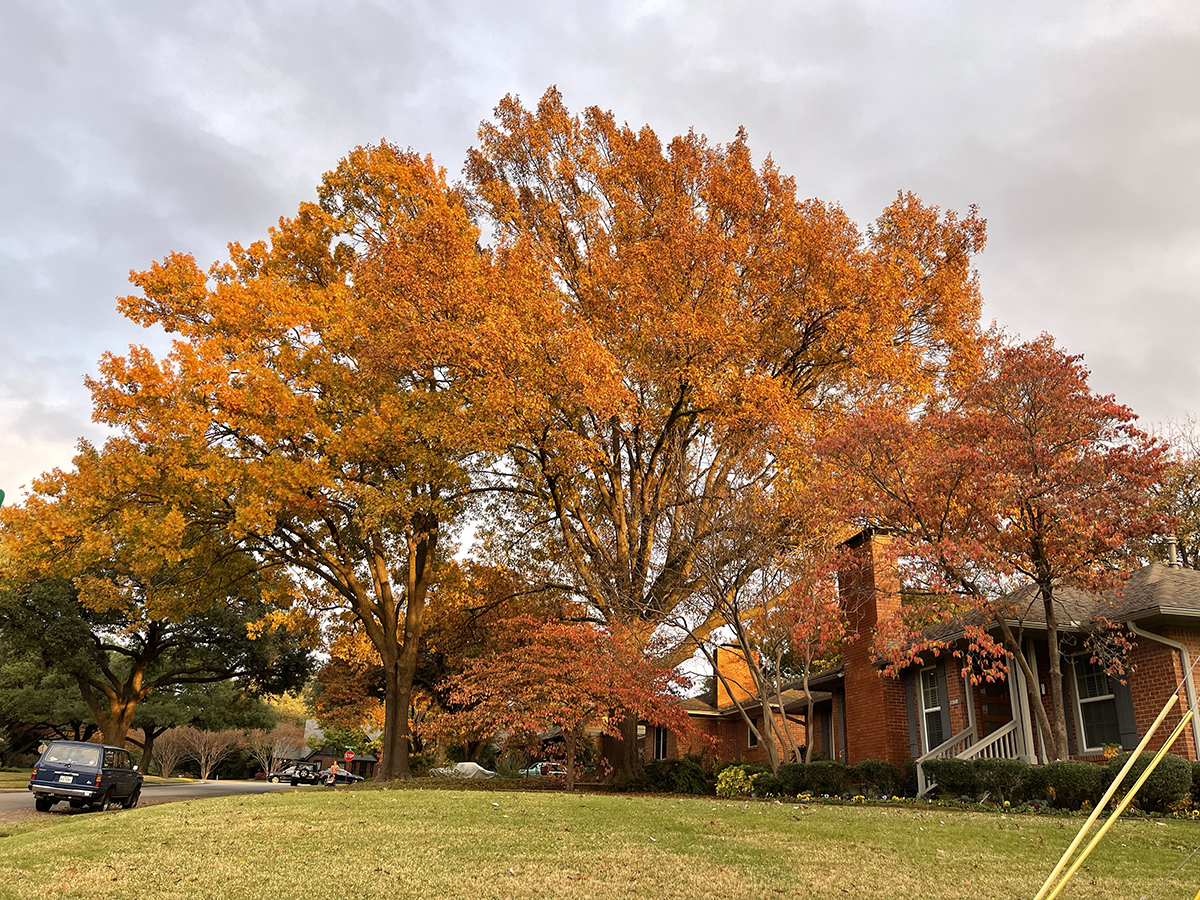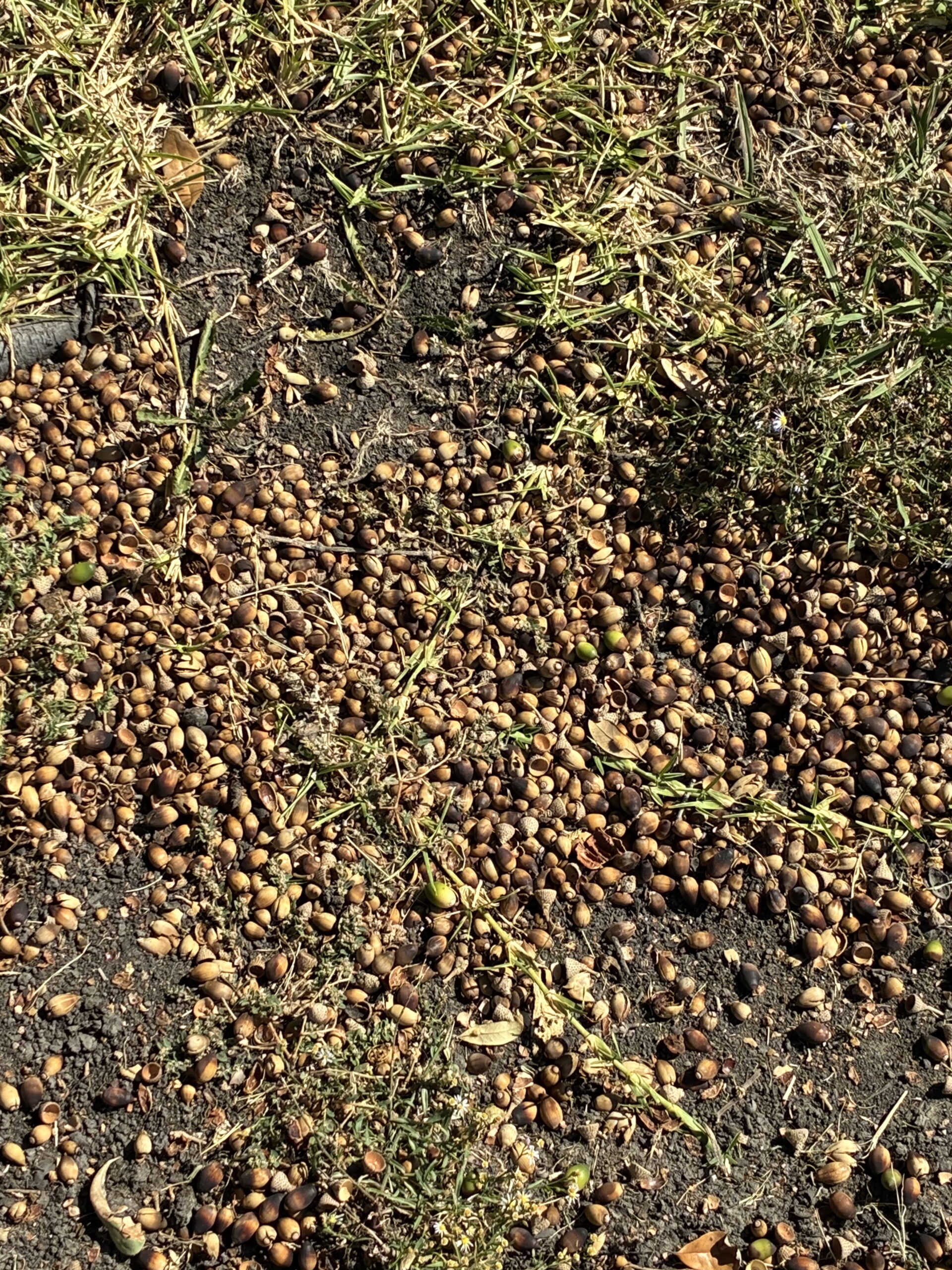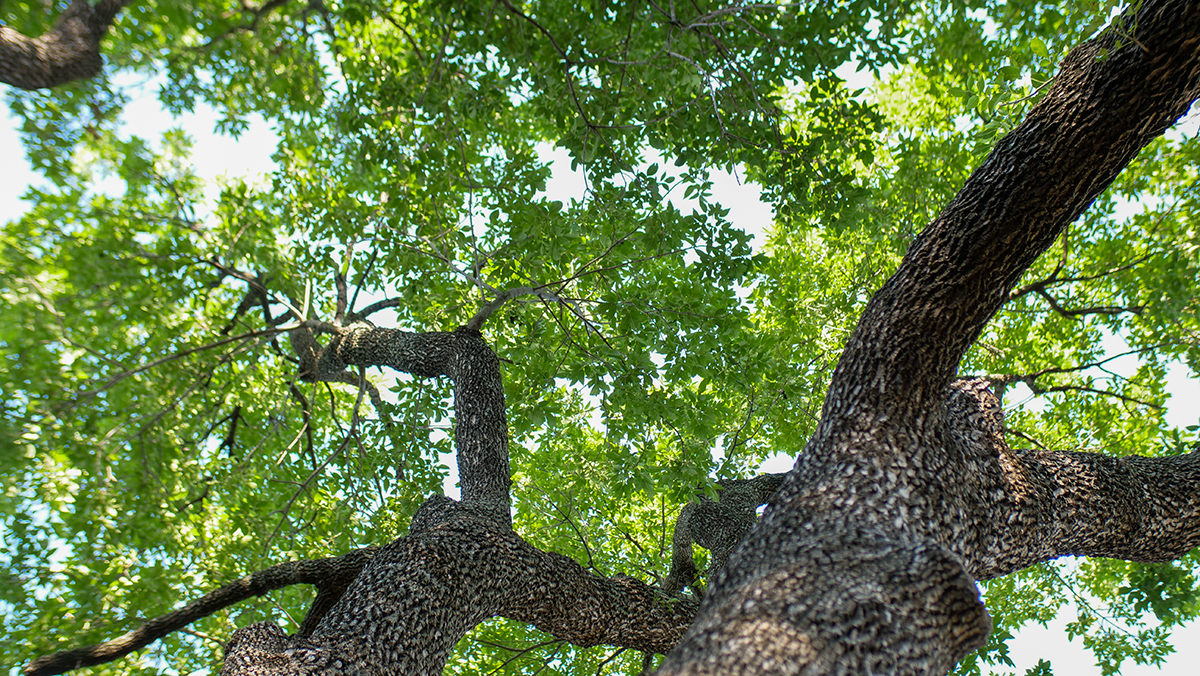Do We Ever Have Colorful Fall Leaves in DFW?

While North Texas is full of natural beauty, the changing color of leaves in the fall is not generally seen. More often than not, our trees are green for most of the year, and then drop their leaves quickly once real winter hits. However, there are a few common North Texas trees that do show some fall color, and there are also a few places close by in Texas that you can visit to get your fill of colorful fall leaves.
Why do leaves change color in the fall?
While we think of leaves as being green, in reality they contain pigments of many different colors, depending on the species. Yellow is one of the most common secondary pigments, along with orange. These colors are not usually seen, however, because the amount of green in the leaf, provided by chlorophyll, greatly eclipses the amount of other colors. The green-colored chlorophyll is an essential part of the plant’s ability to absorb sunlight and convert it into usable energy. During the spring and summer, leaves eagerly process the ample amounts of sunlight and help the plant to grow.
As the year winds down, however, and the weather turns cooler, the amount of daylight lessens. This drop in light and temperature triggers a change in the leaves. The vast stores of chlorophyll in the leaves are no longer needed, and begin to break down. The strong green color begins to fade and be replaced by the underlying pigmentation, such as yellow or orange. Related chemical reactions in the leaves can also produce other colors, like reds or purples. A mixture of several different pigments can appear as brown.
What determines a tree’s fall color?
The exact color of leaves in the fall depends on several factors:
-
Species
- This has the biggest impact on fall color.
- Oaks usually appear brown.
- Some maples show red, yellow, or orange.
- Dogwoods and sumacs can exhibit purple leaves under some conditions.
-
Light
- Depending on your latitude, the change in amount of light from summer to fall can vary greatly.
- A tree’s physical placement can also affect its reaction to the light changes.
-
Temperature
- Low (but not freezing) temperatures over an extended period of time can help with the generation of certain pigments, like reds.
- Early frosts can stop pigment from developing further.
-
Rainfall
- Excessively wet weather can dull fall colors.
- Hot and dry summers can deplete a tree’s resources, affecting fall color production.
Why don’t we see fall color in DFW?
Unfortunately, the trees common to North Texas, combined with the climate, do not make for vibrant fall color.
- Oaks, one of the most common trees in DFW, generally show brown fall coloring.
- Elms and other trees common to our urban forest do show some yellowing in the fall.
- While maples are known for their bright fall colors, they are not very common in North Texas, and when they are planted, are usually smaller than the oaks, pecans, and elms around them.
- Our dry summers and wet autumns usually make for muted fall coloring, and we generally have sudden, drastic temperature changes rather than slower cooling.
Are there any North Texas trees that show vibrant color?
While there are few native trees that exhibit fall color, a few imported species can do well here and give a better chance of a dramatic change.
- Chinese pistache (Pistacia chinensis) is a common sight in our urban forest, and, under the right conditions, can turn an earthy red color in the fall.
- Be sure to plant the pistache where there is good drainage, or it may develop health issues.
- Arborist Tip: Chinese pistaches are more likely to show fall color when both male and female (berry-producing) trees are present.
- The tallowtree (Triadica sebifera) is less common than the Chinese pistache, but can produce a variety of fall colors.
- Be careful, though, as the tallowtree is not cold-hardy.
- Maples do not always do well in our climate and soil here, but if you can get one to become established, you have a great chance to see fall color.
- The Japanese maple is a well-loved ornamental tree that can showcase beautiful colors. One variety has coral-colored bark, for a spark of color even when the leaves have fallen!
- The most common color is red, but some species can show yellow or purple.
Where can I go to see fall color in Texas?
Although we may not have an impressive fall showing in North Texas, there are several places in Texas that do.
- Tyler State Park, just a short trip from DFW, is full of maples, dogwoods, and sweetgums that can show a variety of fall coloring.
- Lake Bob Sandlin, in East Texas near Pittsburg, also is known for its fall foliage.
- Check out this article for more suggestions!
At Texas Tree Surgeons, we love trees (whether they turn colors in the fall or not), and we love our customers! We are always happy to talk about planting possibilities to introduce color to your yard. While we can’t guarantee leaf change in the fall, we do have several great options for spring color! As always, let us know if you have any questions, are looking for planting recommendations, or want to know how best to take care of your trees!
Related Blogs
Similar blogs related to this topic


North Texas Fall Foliage: Why Leaves Change Color
North Texas weather changes as quickly as the mood of a toddler. Oscillating from hot to cold. One thing that clearly denotes autumn in North Texas is the fall foliage. The color shift may not…
Read more

Why Are My Oaks Producing so Many Acorns?
Are you noticing your lawn has a sudden carpet of acorns beneath your feet? If yes, you’re likely experiencing a masting year. In such years, oak trees pull out all the stops to produce an…
Read more

Understanding How Seasonal Changes Effect Tree Health Care
Trees are living organisms that respond to their environment, especially the shifting conditions brought by seasonal change. In North Texas, extreme weather, variable rainfall, and a wide variety of pests and pathogens present year-round challenges.…
Read more
